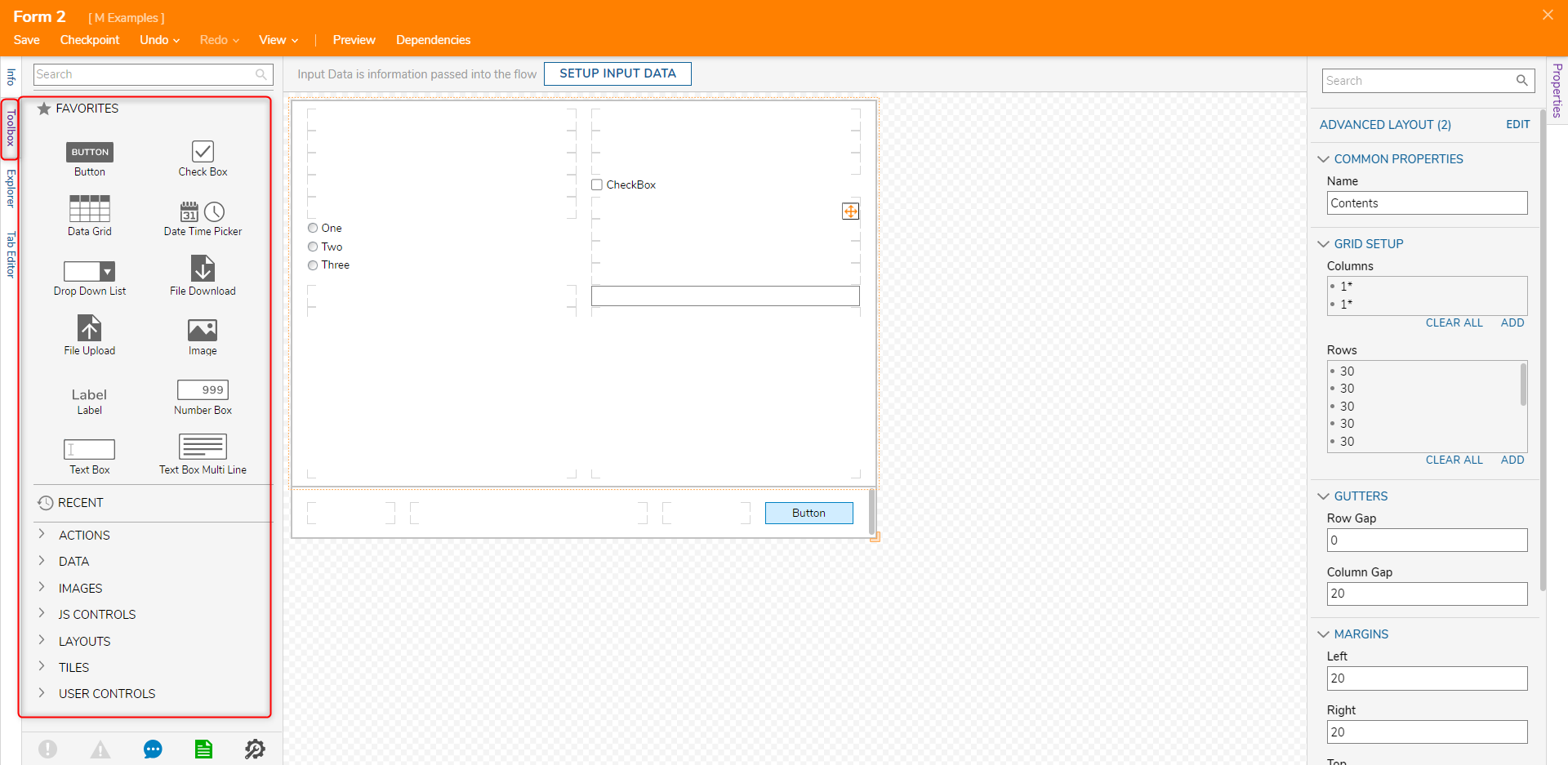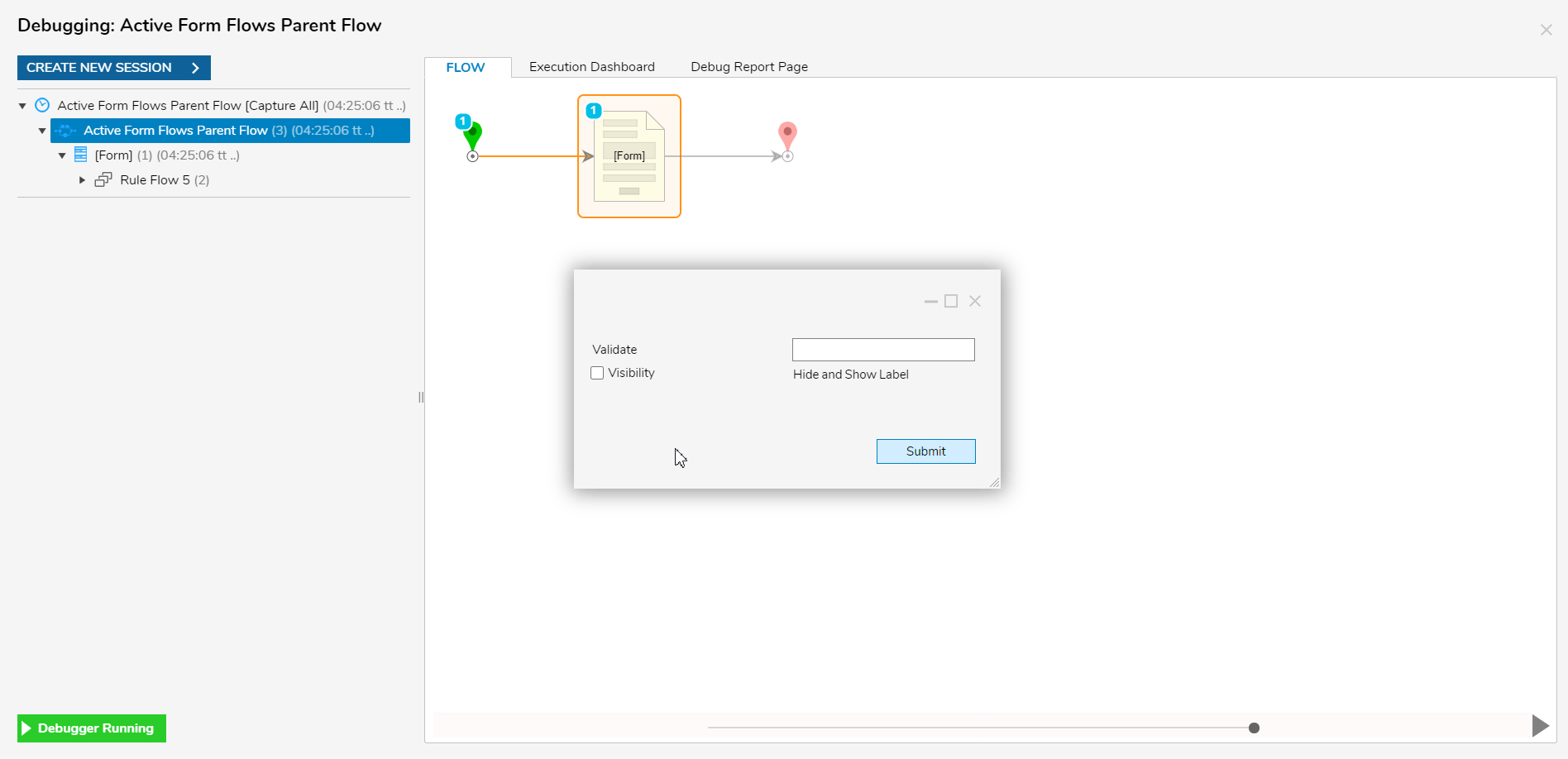Overview
Forms are front-end interactive interfaces to display data. Forms are created by adding Form Controls to the workspace of the Form Designer. A Form must exist in a Flow to be displayed to the end-user.
Form Controls
Form Controls provide a range of different functions such as button actions, display data, organizing controls with layouts, and user controls that can be used in a Form. The Form Controls are located in the Toolbox panel of the Flow Designer.
Form Types
Forms can be created from a variety of template types to output data to the end-user
| Form Type | Description |
|---|---|
| Forms | Standard Interactive Form type |
| Simple Forms | Allow for quick construction of basic functionality and offer sleek, modern design with the most commonly used Form controls |
| Assignments | Forms that can be set as tasks for a user |
| External Form Communication | Forms that can gather data via external interaction through HTML and/or service call integrations |
Interacting with Data and Controls in Forms
Forms have the ability to allow users to dynamically pass in input data and add interactivity to Form controls based on user input.
Interacting with Input Data
Input Data is information that needs to be passed into the Form. It is added by clicking SETUP INPUT DATA in the Form Designer and selecting either DEFINE or PICK DESIGN PATTERN on the Form Input Data dialog window.
Once defined, the Form Designer's Data panel will reveal FLOW DATA, SYSTEM CONSTANTS, and all defined Input Data. These variables can be placed in the Form and be displayed as a Text Box, Label of Data Value, Label of Data Name, RichTextDisplay, or a RichTextBox.
Active Form Flows
Active Form Flows allow users to dynamically alter how Form controls and their data are handled within the Form. The most common use cases involve visibility rules that hide a certain control when another is enabled/disabled, enforcing validation checks to ensure data accuracy, and enabling/disabling a control altogether to prevent additional editing to its contents.